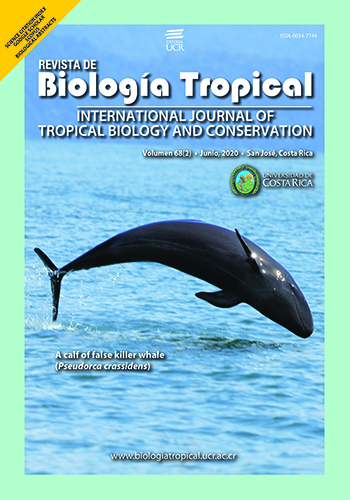Abstract
Introduction: The accelerated transformation of land uses in the Colombian Andes has affected diversity and the provision of ecosystem services. Objective: The structure and floristic composition and the estimation of the carbon stored in biomass of intervened primary forests and pastures with trees in Santa Isabel, Tolima, was described. Methods: In each system, five sampling plots were established: rectangular of 1 000 m2 each in forests and circular of 707 m2 in pastures to measure all individuals with a diameter of 1.30 m in height, ≥10 cm. The biomass was estimated from multi-species allometric models and a generic model in the case of below-ground biomass. Results: In the forest, an average abundance of 642 ± 125 individuals / ha was recorded, finding 25 families, 39 genera, 43 species and morphospecies in 0.5 ha of sampling. Quercus humboldtii and Ladenbergia macrocarpa were the species with the highest Importance Value Index (IVI = 32.5 and 11.2, respectively) in the forests. In pastures, 175.0 ± 21.3 individuals / ha were found, belonging to 8 families, 9 genera, 10 species and morphospecies in 0.35 ha of sampling. Weinmannia pubescens and Eugenia spp. had the greatest ecological importance (19.5 and 17.6 %, respectively) in pastures. The forest stored an average of 125.0 ± 30.0 t C/ ha, compared to 18.4 ± 1.8 t C/ha in pastures. Conclusions: These findings show high carbon storage capacity in these land uses, which contributes to maintain or decrease the concentration of greenhouse gases in the atmosphere, and therefore, are a benchmark that allows to develop conservation strategies, with a view to mitigate climate change.
##plugins.facebook.comentarios##

This work is licensed under a Creative Commons Attribution 4.0 International License.
Copyright (c) 2020 Hernán Jair Andrade



